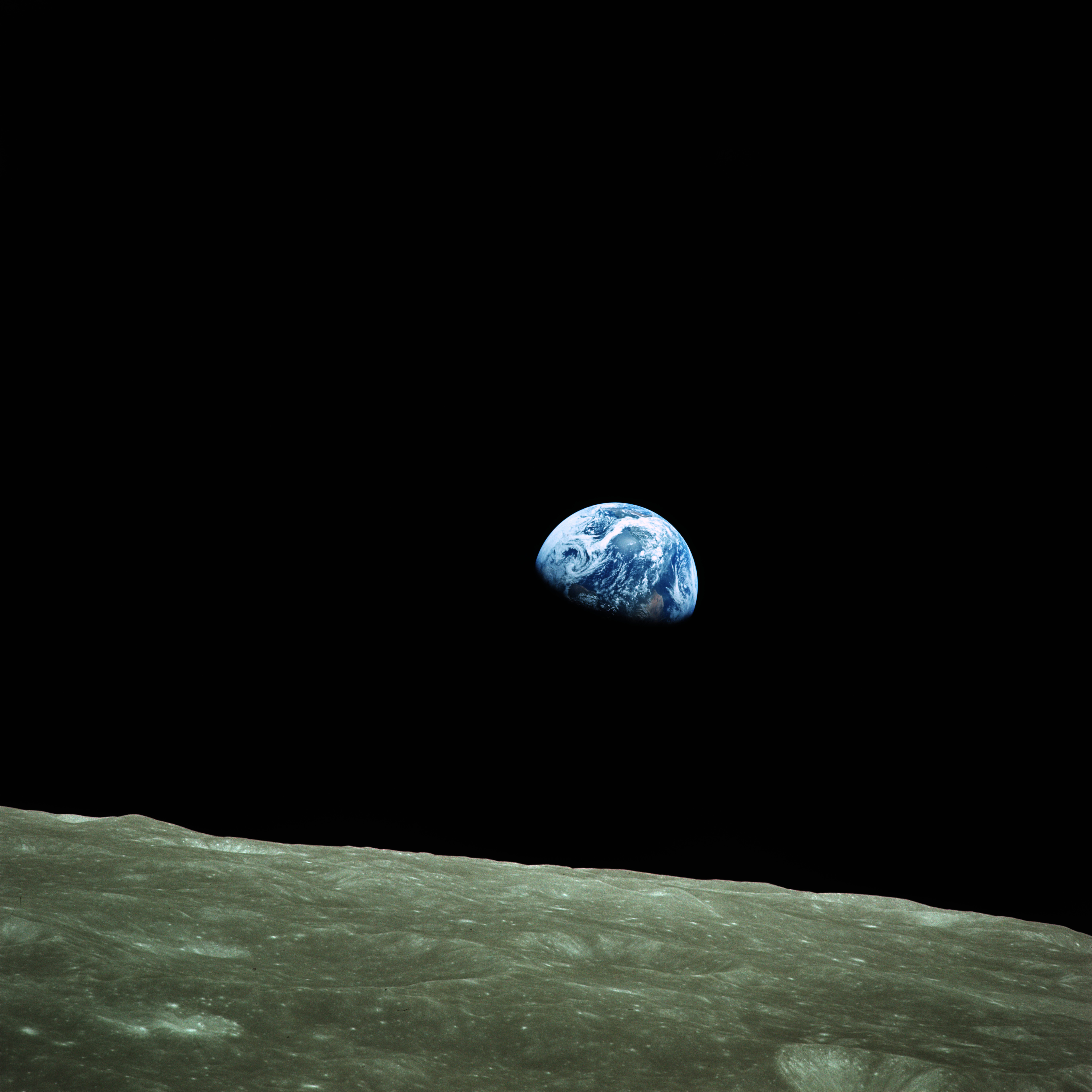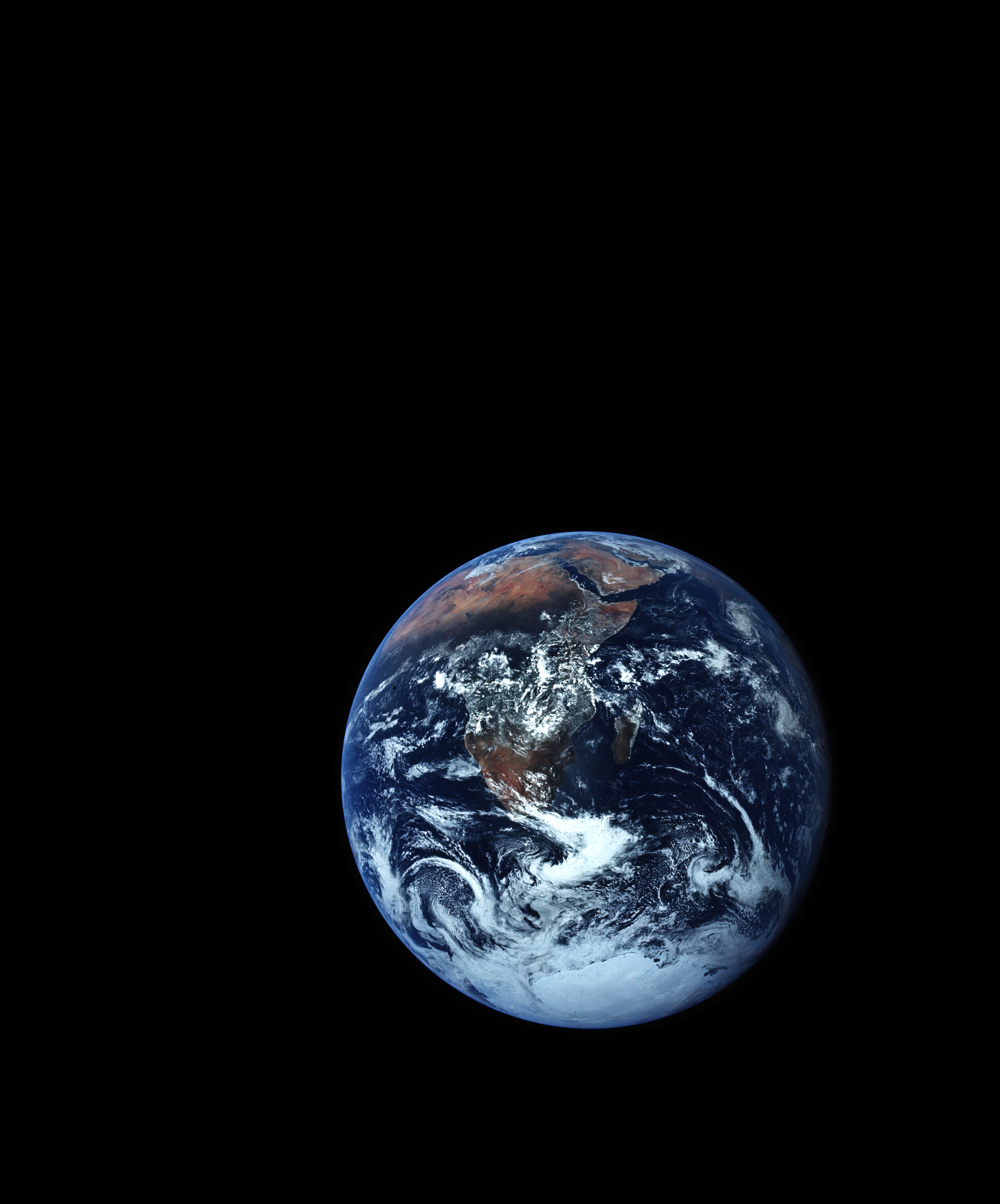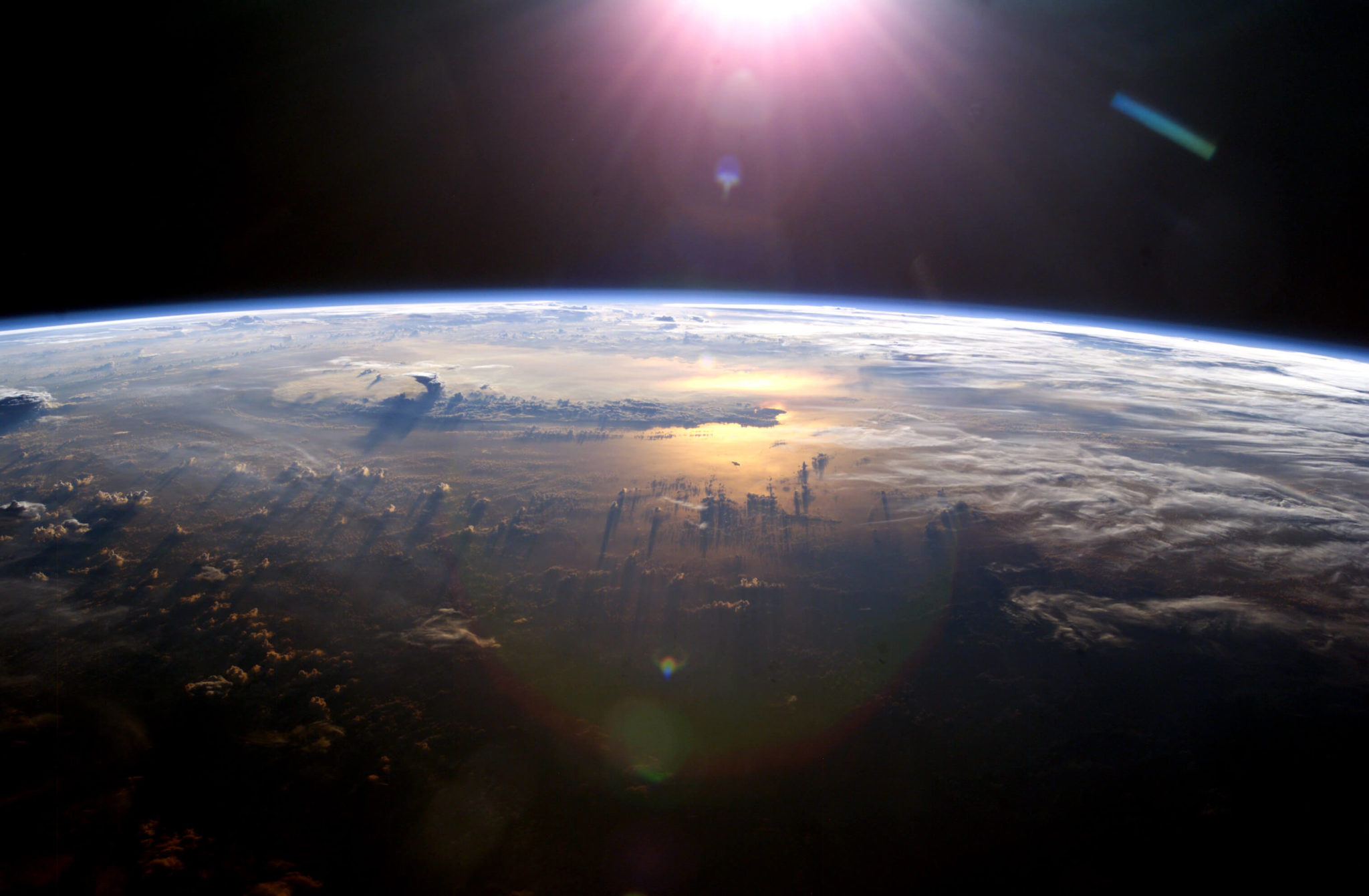
Once a photograph of the Earth, taken from outside, is available, we shall in an emotional sense, acquire an additional dimension. … once let the sheer isolation of the Earth become plain to every man whatever his nationality or creed, and a new idea as powerful as any in history will be let loose.
The quote, spoken in 1948 by British astronomer Fred Hoyle, is well known and frequently associated with ‘Earthrise’, this photograph taken 20 years later by William Anders from Apollo 8.
Like many famous quotes the exact words spoken by Hoyle are often paraphrased or abbreviated. Here then, for the internet, is the complete quote in context. The text is faithfully copied from pages 9 and 10 of Hoyle’s 1950 book, The Nature of The Universe, A Series of Broadcast Lectures. These are transcriptions, by Hoyle, of lectures he had given in the preceding few years.
THE EARTH SEEN FROM OUTSIDE
Once a photograph of the Earth, taken from outside, is available, we shall in an emotional sense, acquire an additional dimension. The common idea of motion is an essentially two-dimensional idea. It concerns only transportation from one place on the surface of the Earth to another. How many of us realize that but for a few miles of atmosphere above our heads we should be frozen hard as a board every night? Apart from the petty motion of the aeroplane, motion upwards as yet means nothing to us. But once let the possibility of outward motion become as clear to the average man at a football match as it is to the scientist in his laboratory, once let the sheer isolation of the Earth become plain to every man whatever his nationality or creed, and a new idea as powerful as any in history will be let loose. An I think this not so distant development may well be for good, as it must increasingly have the effect of exposing the futility of nationalistic strife. It is in just such a way that the New Cosmology may come to affect the whole organisation of society.
Now what does a contemporary astronomer expect such a photograph, a colour photograph, of the the Earth to look like? There will be brilliant white patches where the sun’s light is reflected from clouds and snow fields. The arctic and antarctic will on the whole appear brighter than the temperate zones and the tropics. There will be all shades of green, varying from the light green of young crops, to the sombre darkness of the great northern forests. The deserts will show a dusky red, and the oceans will appear as huge areas that look grimly black, except occasionally they will be illuminated by a blinding flash where conditions allow the Sun’s light to be powerfully reflected, much as we sometimes see a brilliant shaft of sunlight reflected from the windows of a house. The whole spectacle of the Earth would very likely appear to an interplanetary traveller as more magnificent than any of the other planets.
Fred Hoyle in THE NATURE OF THE UNIVERSE, A Series of Broadcast Lectures,
Basil Blackwell Oxford, 1950
… but not blue. In his mind’s eye Hoyle clearly saw something similar to this Apollo image (use the magnifier to see the incredible detail of colour and form visible in South America and Africa). The many shades of green and the dusky reds are all there, along with the brilliant white clouds. The snow fields of Antarctica take center stage in the arguably even more iconic ‘Blue Marble’ image from Apollo 17 (below), and while we can see a specular highlight of reflected sunlight off the coast of Brazil in the Apollo 8 image, Hoyle’s blinding flashes of reflected sunlight would appear in images from later space missions like the familiar 2003 ISS image at the bottom of the page. However, Hoyle didn’t predict the blueness. It’s something all the people who have witnessed it for real mention consistently, and something we can all see in the images.

Most of us will never see our planet like this with our own eyes but we only have to look at the diffrence between our photos of blue skies and our expereince of them to understand just how magnificent the scenes in these images must really appear. Certainly those astronauts who have seen the Moon up close and the Earth from afar like this all recognise Hoyle’s prescient sense, and unanimously agree that the Earth doe indeed appear ‘more magnificent than any of the other planets’.
That we can see these images in such incredible detail is thanks to the team behind the March to the Moon, a project which has carefully scanned all the photographic treasures from NASA’s Mercury, Gemini and Apollo programmes and made them available as a global archive. It’s a truly incredible collection, with the images you’ve never seen before offering a fascinating insight into the context and back story of the historic missions which brought us these world changing photographs. Head over there to see how these iconic images fit into the story of humanity’s very first steps on the road to self-awareness, and one day perhaps, even intelligence.
